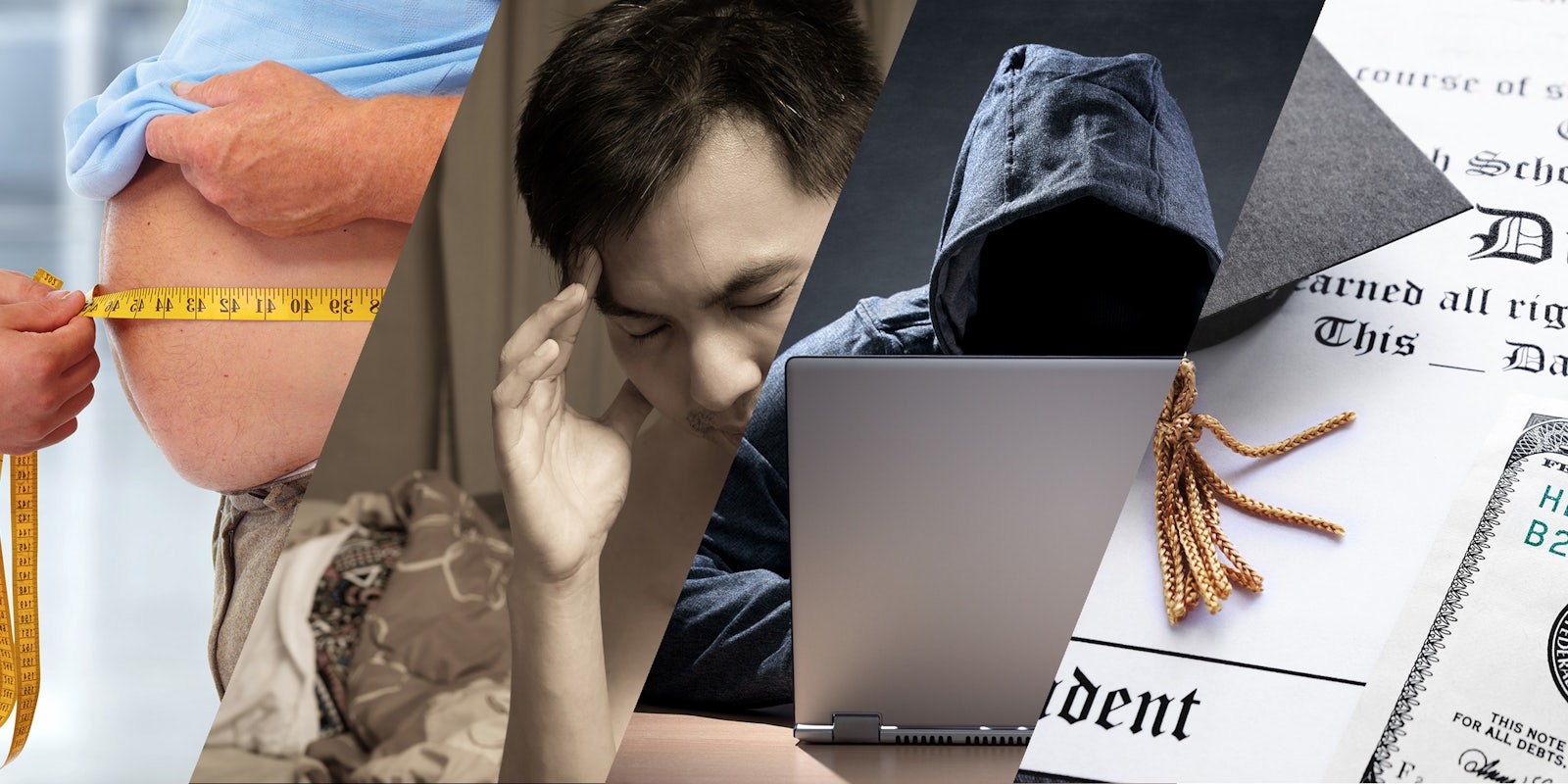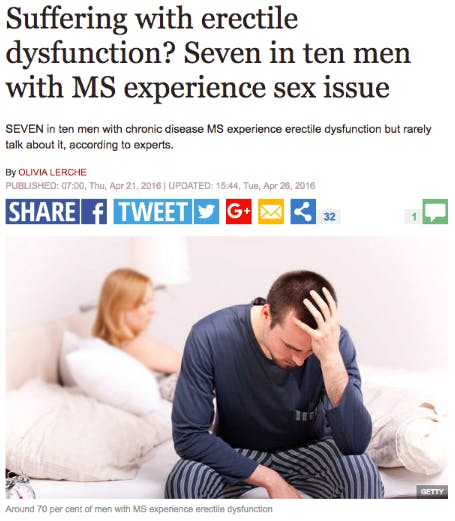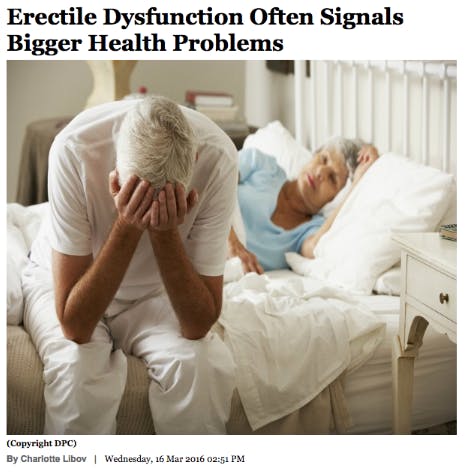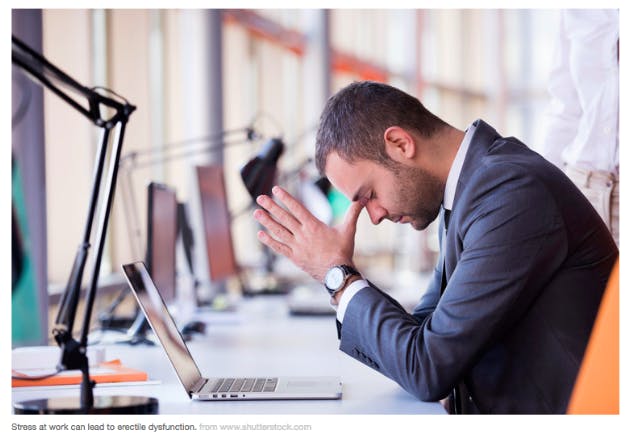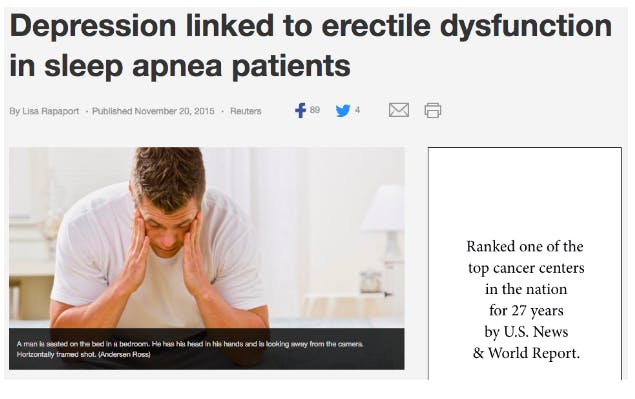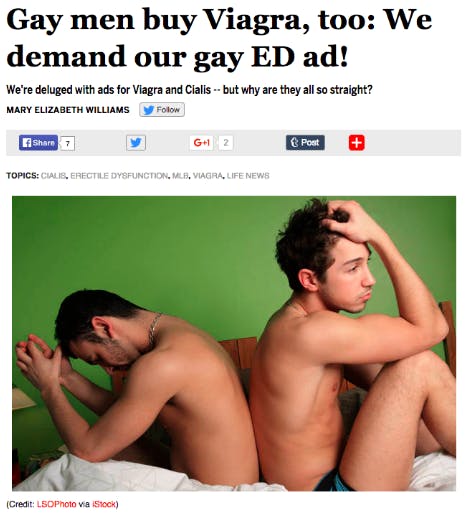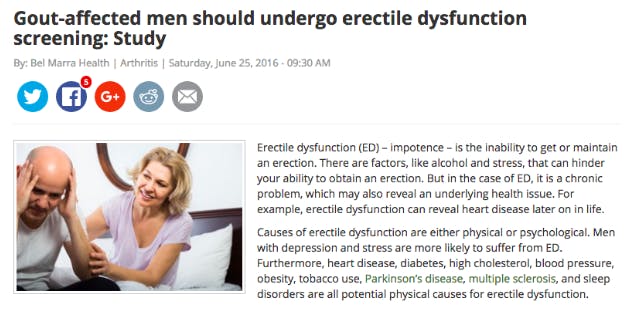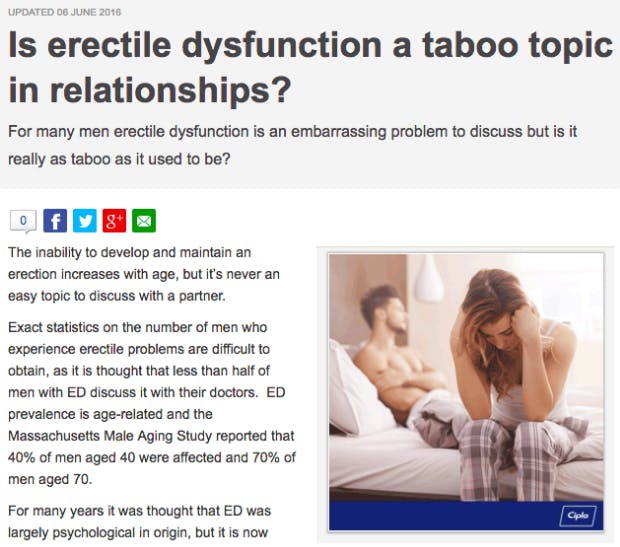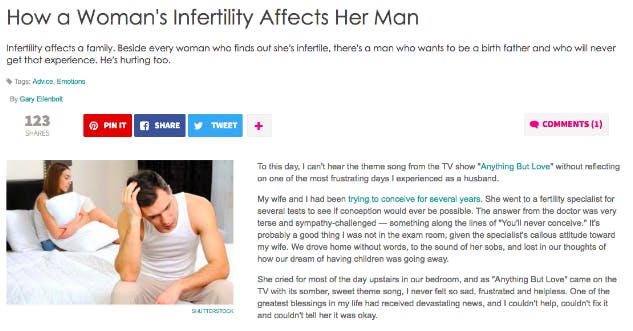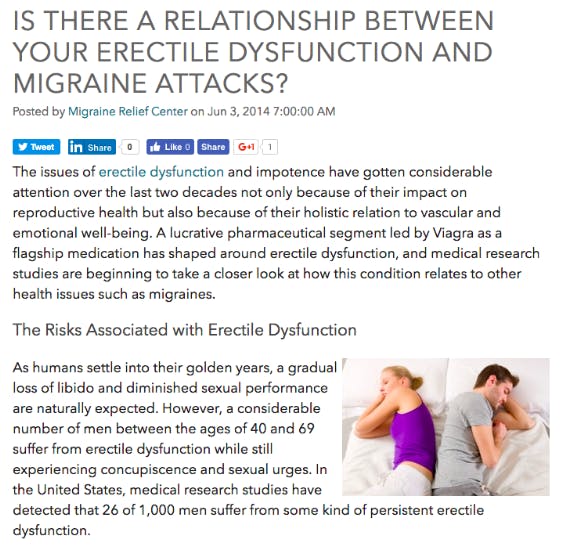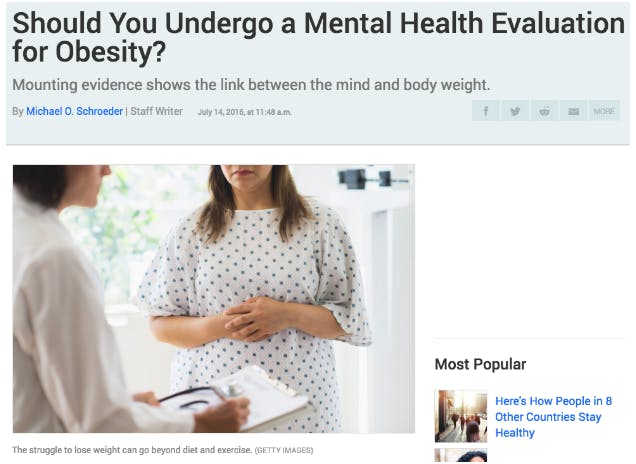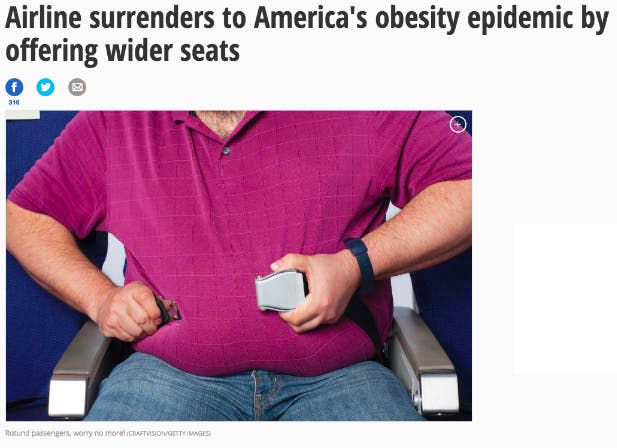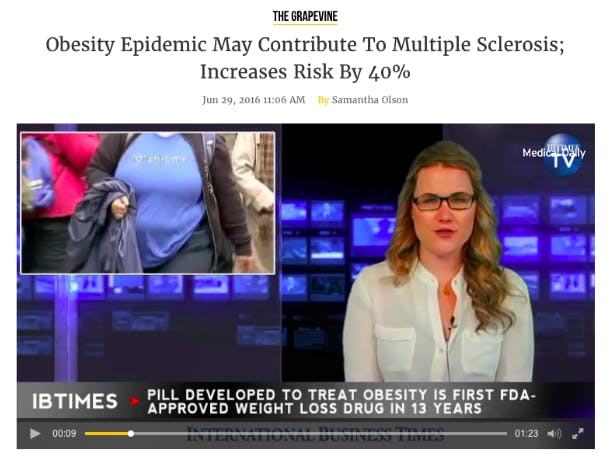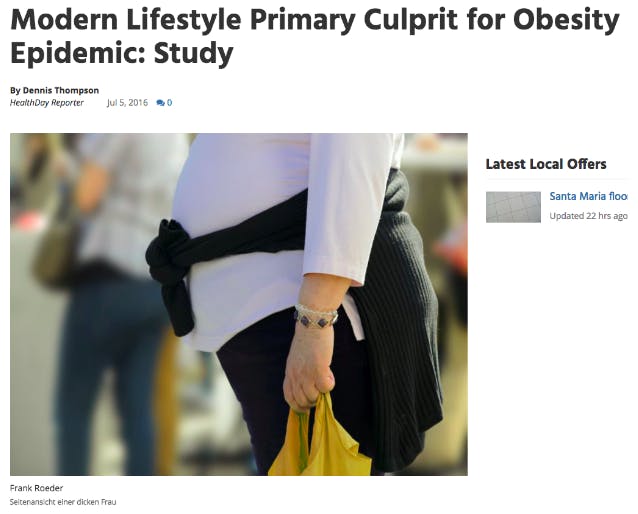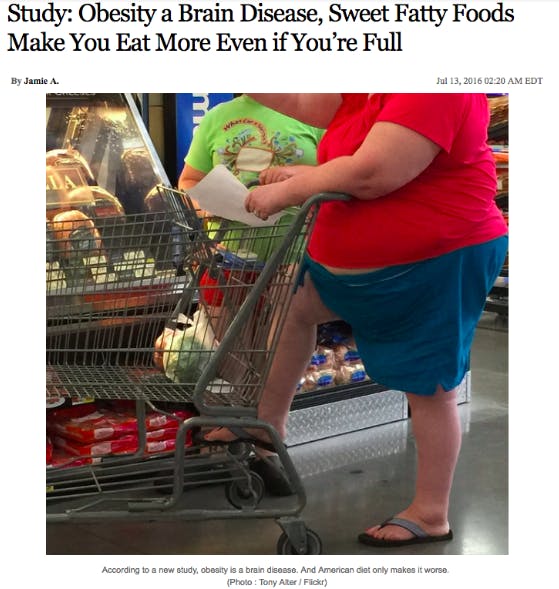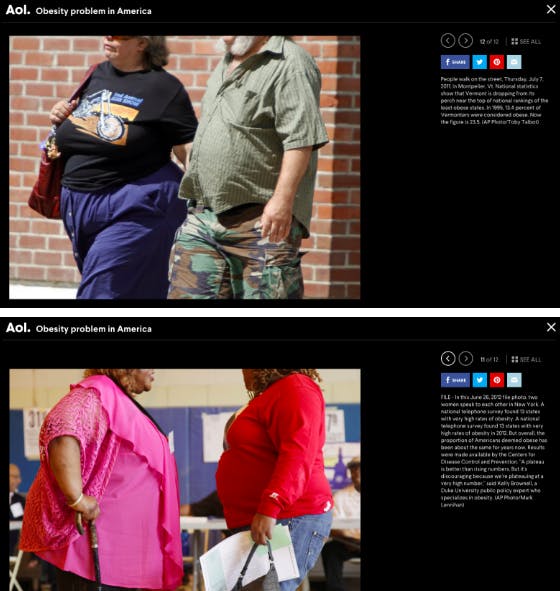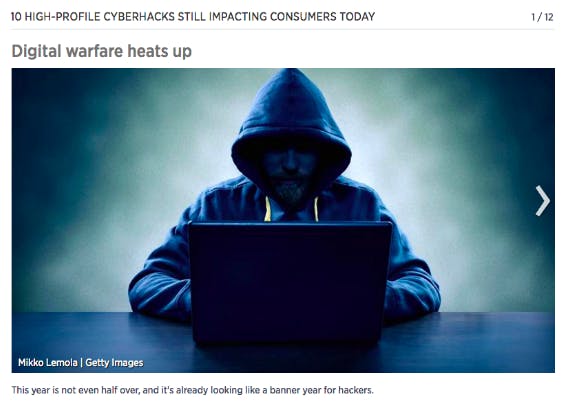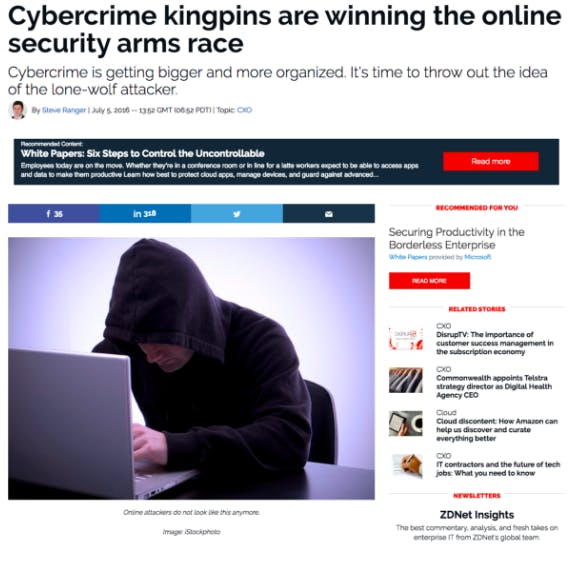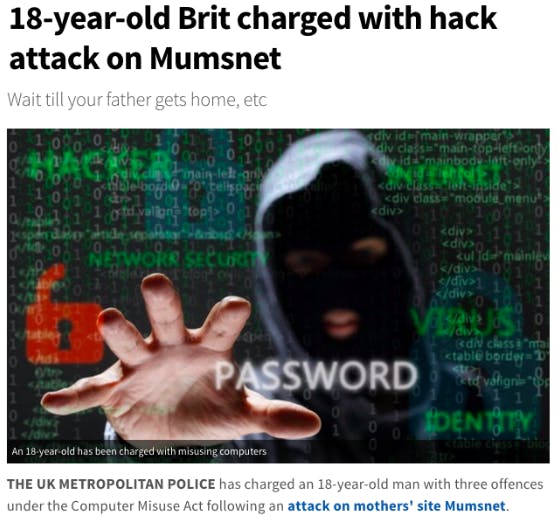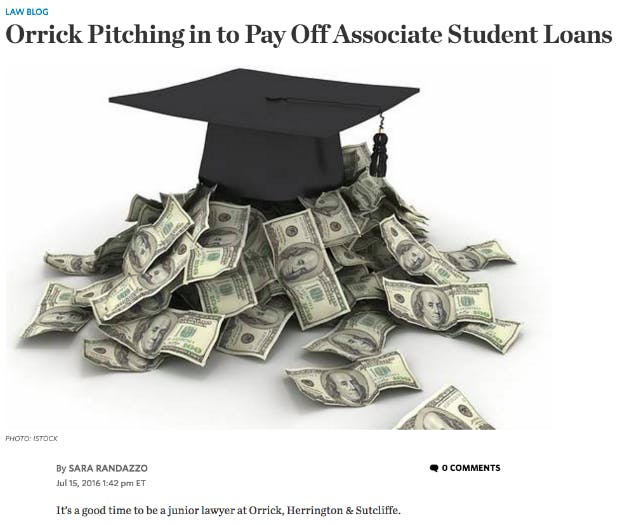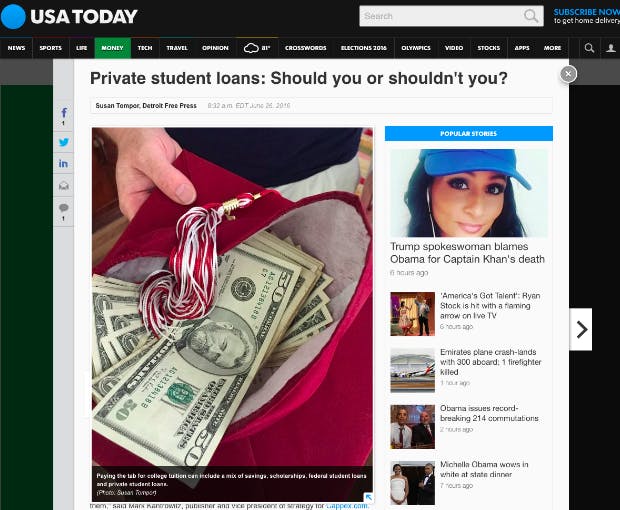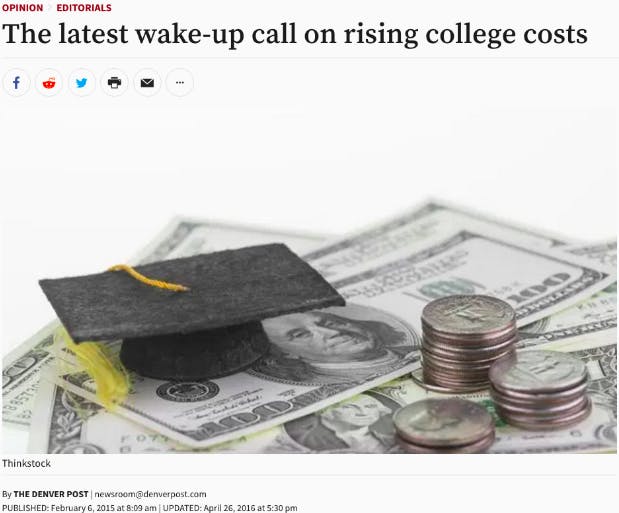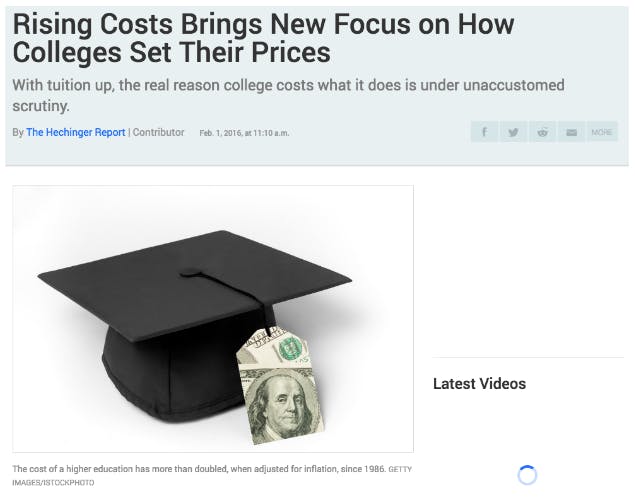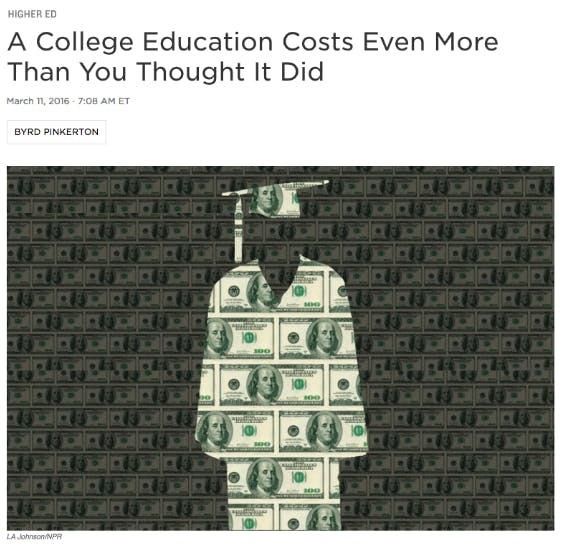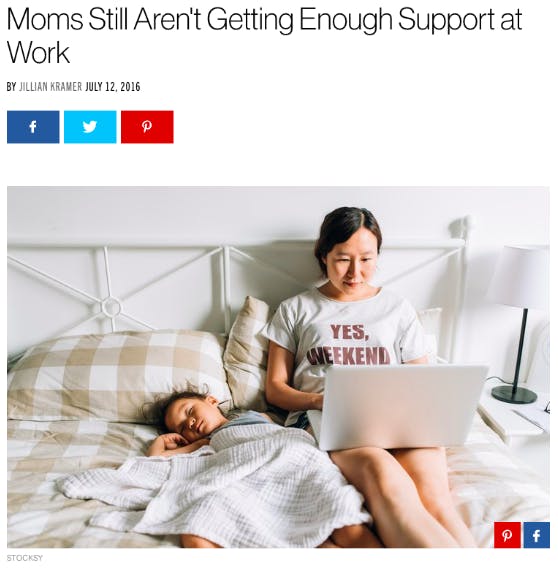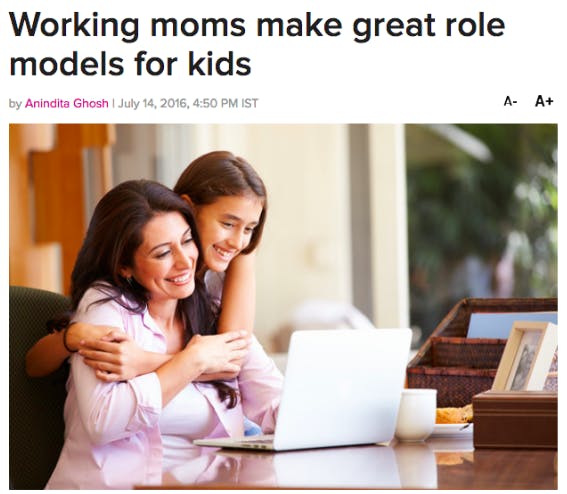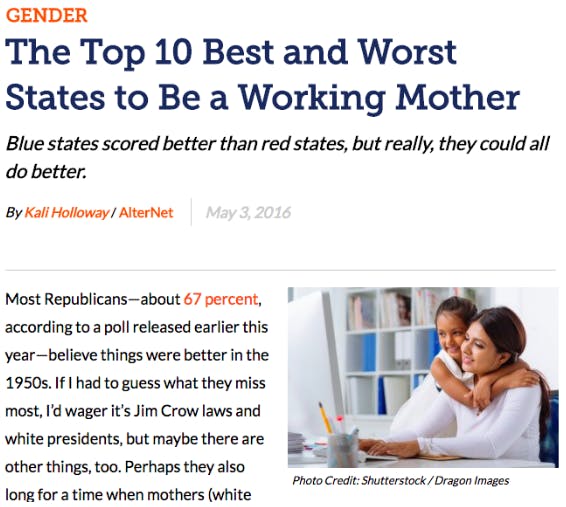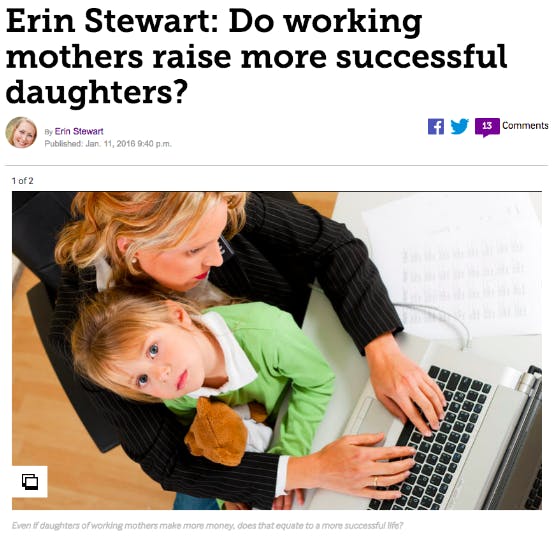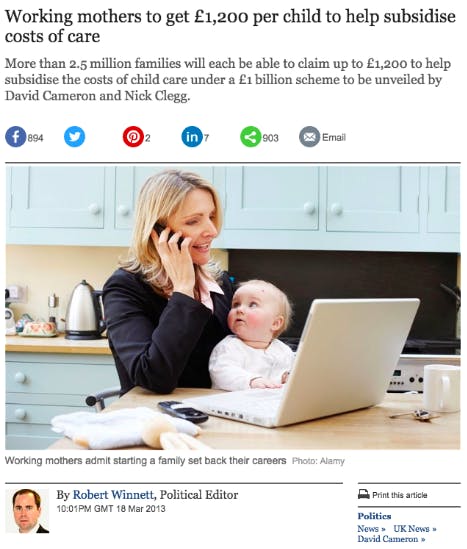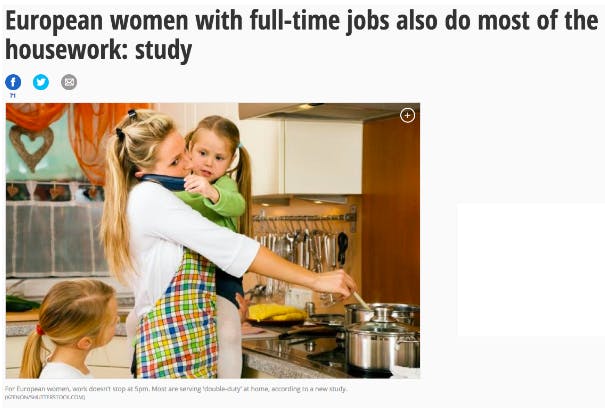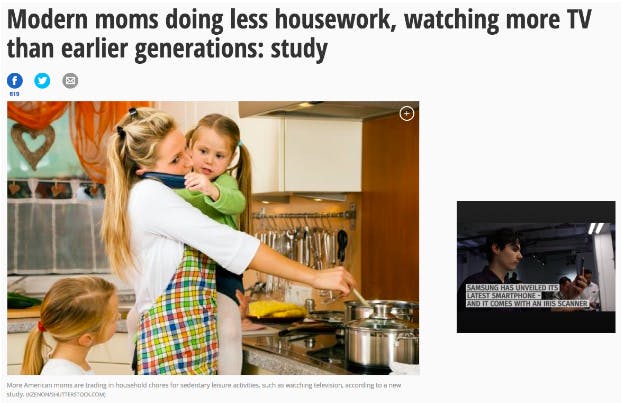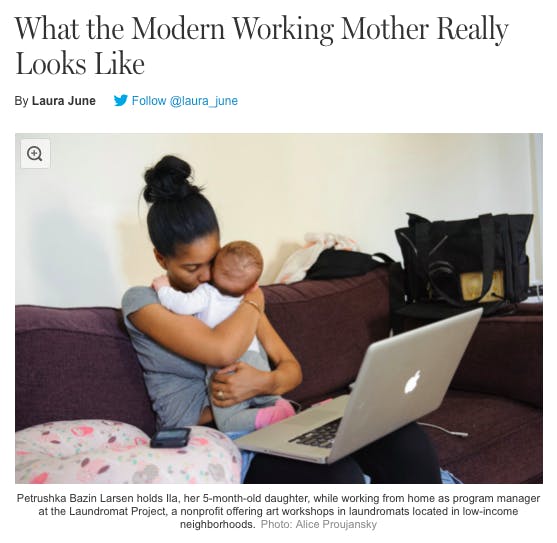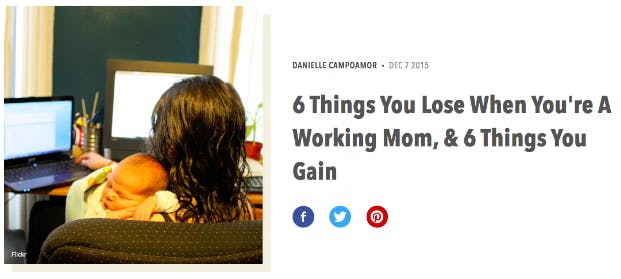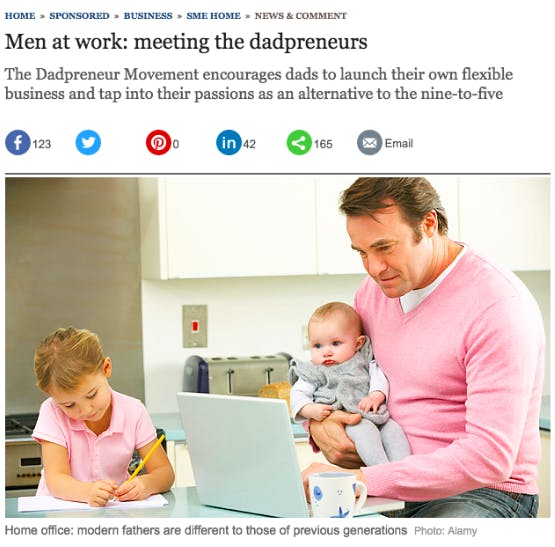Making fun of stock photos is, at this point, a bit lazy. We all know that the massive databases of Shutterstock and Fotolia are full of women proud of their two apples and women struggling to drink water and hackers wearing ski masks. Yes, photographers take weird pictures.
What’s still fresh and frightening and meaningful is that websites are using them. In particular, they’re using the same photo clichés for the same topics, over and over.
The bar for entry into a stock photo library is low enough. And a photographer needs to sell bulk rights for more than the cost of production, so they shoot their model in every conceivable position. It’s just another weird artifact of economics.
It’s a higher offense to grab that image from the photo bank, slap it on an article that weighs it with particular meaning, and perpetuate a certain vision of the article’s topic.
1) The erectile dysfunction tension headache
Thank you to Briana Mowrey for naming the head-in-hands pose of a man sitting on the edge of his beige bed. While the photos below are used online to illustrate all kinds of unhappiness, they’re best known for one very special kind.
In real life, a reluctant boner usually causes embarrassment, maybe awkward jokes, some annoyance or consolation. I’ve been told. But in stock photo land, a couple with erectile dysfunction looks like they’ve just lost a baby to SIDS.
An out-of-focus disappointed partner usually drives the point home, as seen in the Daily Express:
Even elderly men are brought to existential despair over ED in Newsmax:
Thrillist applies the drama to even a temporary case:
Slate shows the ED headache at the doctor’s office:
In the Conversation, the ED headache strikes in the workplace:
The depression angle might justify this use in Fox News:
ED tension headache sufferers are overwhelmingly straight and white. I came across only one same-sex tension headache, in Salon, in a piece addressing the straights-only problem in Viagra ads:
The next example comes from a health-supplement store, which might explain the woman’s unusually jovial reaction to her partner’s despair, as if she’s saying: “Relax, I have an herbal remedy for this.”
In advertorials, the headache can be passed male-to-female:
But even in cases of women’s infertility, the real victim (as shown in Parenting.com) is the man:
To be fair, actual tension headaches are associated with sexual dysfunction. Which according to stock photo logic leads to the dreaded back-to-back sleep:
There’s a second perception issue here: Stock-photo illustrations are works of fiction, metaphors for the real subjects. But the models can be unfairly confused with the characters. This happens all the time with memes, which ruthlessly recontextualize real people’s photos; the real people used for Scumbag Stacy, Privilege Denying Dude, and “I can count to potato” all fought the use of their photos after being harassed for the depictions. But those were all unauthorized uses of non-stock photos; models have less leverage with legally licensed usage of their work.
What is an editor’s responsibility to stock photo models? I asked Chris McGonigal, photo editor at the Huffington Post, who said: “We kind of drill into our editors here that people in stock photos are actual people, so it can be really harmful if we’re using their image in an unflattering way. No one wants their photo used as a stock photo on a post about a new STD medication.”
For this reason, plus the boring sameness of stock photos, the site tries to reach beyond stock photos, composing its own illustrations or taking them from social media with the source’s permission. (The Daily Dot also uses original illustrations when possible.)
Of course, ED is a relatively benign subject, and its clichéd portrayal makes it clearer that the people portrayed are actors playing a role. Other contexts are less defensible.
2) The headless obesity epidemic
A much more serious problem is news media’s dehumanization of the obese. This trope, which still hasn’t died down nine years after author and activist Charlotte Cooper exposed and analyzed it, is especially egregious for involving not just consenting stock-photo models, but the general public.
The awkward implications are even apparent in this relatively innocuous example in U.S. News. Is this model considered obese?
When the New York Daily News wants to frame wider Swiss airplane seats as a “surrender” to American obesity, they find an almost-relevant stock photo. The headline is a bit cruel, but the photo invites sympathy to the victim of narrow airline seats. And the model gets to stay anonymous:
But many sites use candid shots, a murkier ethical choice that likely involves unpaid subjects. Here’s IBT Media site Medical Daily:
The Lompoc Record lops off every inessential part of the body. It’s anonymizing, but it’s also dehumanizing:
Nature World News grabs a Flickr photo tagged “obesity” and “BBW”. It’s clear no one in this photo consented to be photographed, much less for an obesity report. This is exactly why outlets need an ethical code like the Huffington Post’s.
The photos above are, at least, single illustrations on text articles. AOL goes further and puts the photos up front, in a juicy slideshow (and accompanying video) that drops the pretense of mere illustration. Here anonymous civilians, all headless or facing away from camera, none actually named as a subject of the article, serve as museum exhibits. They’ve done nothing to invite this scrutiny besides failing to achieve an ideal body type.
As the activist Cooper wrote in 2007: “Headless Fatties are a version of fat people, a never-ending parade of us, taken from us and then sold back to us, hatefully and with ignorance. They reek of a surveillance culture with which fat people—whose bodies are policed by glares, and disapproving looks—are all too familiar.”
Concern-trolling online media, instead of targeting obesity’s causes, are attacking its victims and bystanders, using candid shots of non-consenting “models” to publicly diagnose them with a medical condition.
A similar issue affects those of victimized races and religions. Thanks to irresponsible photo sourcing at CNN, a video about terrorist extremists included footage of an innocent Muslim woman from Michigan. CNN took down the video after the woman’s family contacted the American-Arab Anti-Discrimination Committee. In a time when xenophobic Americans regularly harass Muslims (and anyone who vaguely resembles them), careless news illustration has serious consequences.
Christ, that was depressing. Here are some cute clichés that probably aren’t hurting anyone.
3) Mr. Robot’s hacker hoodie
As news organizations get savvy about online security, their hacker illustrations have switched from ski masks to hoodies. OK, a lot of cybercrime probably was committed in hoodies. But just because they’re comfortable. Not to, like, hide.
The Hindustan Times turns a hoodie into a cloak of invisibility:
CNBC uses a hacker hoodie to start a slideshow of “high-profile cyberhacks” that makes liberal use of the other two internet-news clichés, corporate logos and angled shots of web pages. Their hacker has a lumbersexual vibe:
“Online hackers do not look like this anymore,” says a ZDNet caption writer locked in deadly battle with his photo editor:
The Telegraph chooses the “hacker as cultist” aesthetic:
Federal Computer Week tries a light Matrix motif:
Tech tabloid the Inquirer tries a heavy Matrix motif:
PR Week just goes nuts with the ones and zeros, which are pretty abstracted from anything a hacker does:
Hoodie hackers are a pretty innocuous stereotype. There’s not much wrong with the public imagining online criminals as Jesse Eisenberg at a logoless MacBook. Still, all the floating code makes it hard to take these stories seriously.
4) Graduation cap on a pile of student loan cash
This is probably the most defensible news-illustration cliché. Student loan debt is a double abstraction: College stories mean grinning grads in caps and gowns, and debt stories mean money or, worse, graphs. So just combine them into what’s basically a high-pixel-count emoji that implies the money itself is graduating.
The pictures are boring, until you look closely. In the Wall Street Journal, the same crumpled hundred is copy-pasted into a pile:
GigaOM rests a tiny cap on a potentially infinite bed of cash:
USA Today innovatively tucks the money inside the cap, maybe to hide all the ones under that fifty:
In the Detroit Free Press, the cap is handily labeled:
Real estate finance blog Mortgage Orb is even more explicit:
The Denver Post uses a cute toy grad cap that matches the “low price” connotation of the loose change:
The Huffington Post uses a tassel price tag, a cleverer metaphor that leaves room for a human:
U.S. News can’t pick its metaphor. The price tag… is money?
Of course, original illustrations can use the same clichés. NPR puts the tag on the diploma:
And just a month earlier than that, NPR makes the whole cap and gown out of money:
The cap-and-cash metaphor is an especially dull solution to illustrating abstract reports, but at least it’s harmless.
5) Working mom = kid + laptop
Working mothers are a diverse demographic, and stories about them might take place in blue-collar, retail, or white-collar environments. But there’s just one place the mom in the photo will be: at home, cradling a child while typing one-handed on a laptop.
It’s a cliché, but not an especially damaging one. It’s a racially diverse trope, if economically homogeneous.
This Huffington Post piece is about breastfeeding breaks, which the site understandably avoids depicting directly:
Glamour has a justified use in a piece that covers maternity leave and working from home:
Femina uses a generic scene that has also illustrated social media thinkpieces and a wireless router sales page:
The same ambiguous pose shows up on AlterNet:
Deseret News pulls a triple threat: a kid-laptop-phone combo complete with a pinstripe power suit, like the first act of a movie about a harried businesswoman whose life is about to turn upside down when she meets a single dad played by George Clooney:
The Telegraph says one phone’s not enough, but mercifully stops short of making Mom use both at once:
The New York Daily News replaces the laptop with dinner:
And don’t worry, they also found another use for that photo!
The literal work-family juggle isn’t technically fictional; some women sometimes work from home, and sometimes their child is nearby. When the Cut interviewed photographer Alice Proujansky about her series Women’s Work, they were justified in leading with a real-life baby-plus-laptop shot:
And in a more ethical use of social media sourcing, an unposed Flickr shot titled and tagged “working mom” showed up on Romper:
There are plenty of stock photos for working fathers. It’s just very hard, even with Google reverse image search, to find them used in articles. And when you spot one in the Telegraph…
He’s starting a business to tap into his passion.
As Megan Garber writes in the Atlantic, stock photos have a definable aesthetic that includes not just lighting and saturation but subject choice: “Life as told through the stock image is beautified and sanitized and occasionally dominated by camisole-clad ladies holding things.”
Stock photos represent the default, the average—not of real-world experiences, but of the photographer’s biases and assumptions, which influence what subjects they shoot, what photos they upload, and how they tag them. The options are further filtered through the biases of the stock photo site and the news editor, until the most “default” photo is chosen. What image will most straightforwardly symbolize the story’s subject, depicting the norm without any distracting details?
But words like “default” and “norm” should be ringing an alarm bell. “Default” choices are why lower-class people are underrepresented in the illustrations above, why the couples in ED stories are all straight, why “obese” is determined through a photo and not a medical diagnosis. Even relatively attentive photographers and editors can reinforce stereotypes through unexamined choices.
The creative team behind BoJack Horseman has talked publicly about the “male as default” problem. When production designer Lisa Hanawalt drew a “businessman gag” with businesswomen, showrunner Raphael Bob-Waksburg says he caught himself treating the characters’ genders as a complication: “The underlying assumption there is that the default mode for any character is male, so to make the characters female is an additional detail on top of that. In case I’m not being a hundred percent clear, this thinking is stupid and wrong and self-perpetuating unless you actively work against it.”
Actively working against stock-illustration clichés could nudge the public toward accepting and expecting diversity. But even an iota of careful thought could make the news less of a home to fat-shaming, and to labeling innocent Muslims as terrorists.
